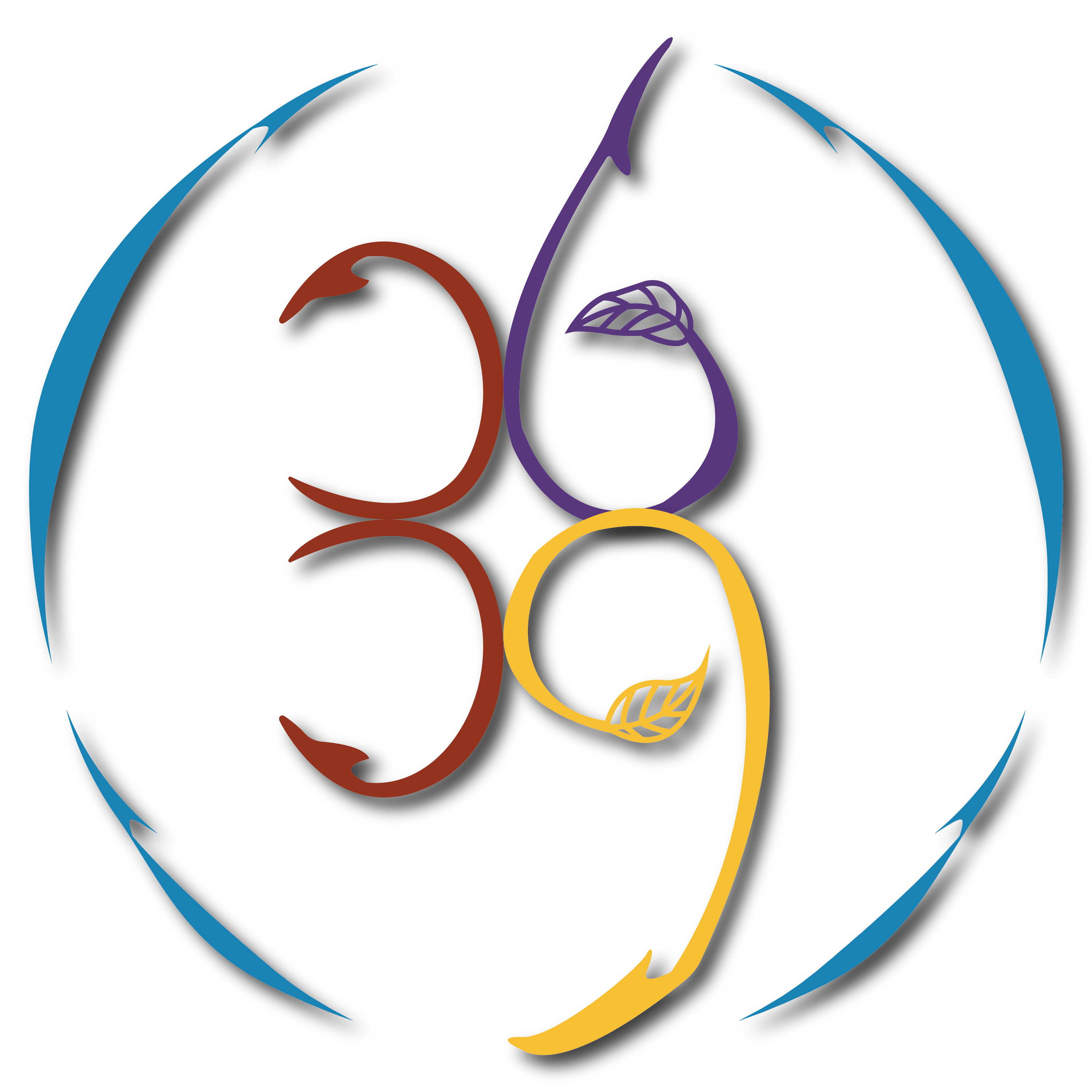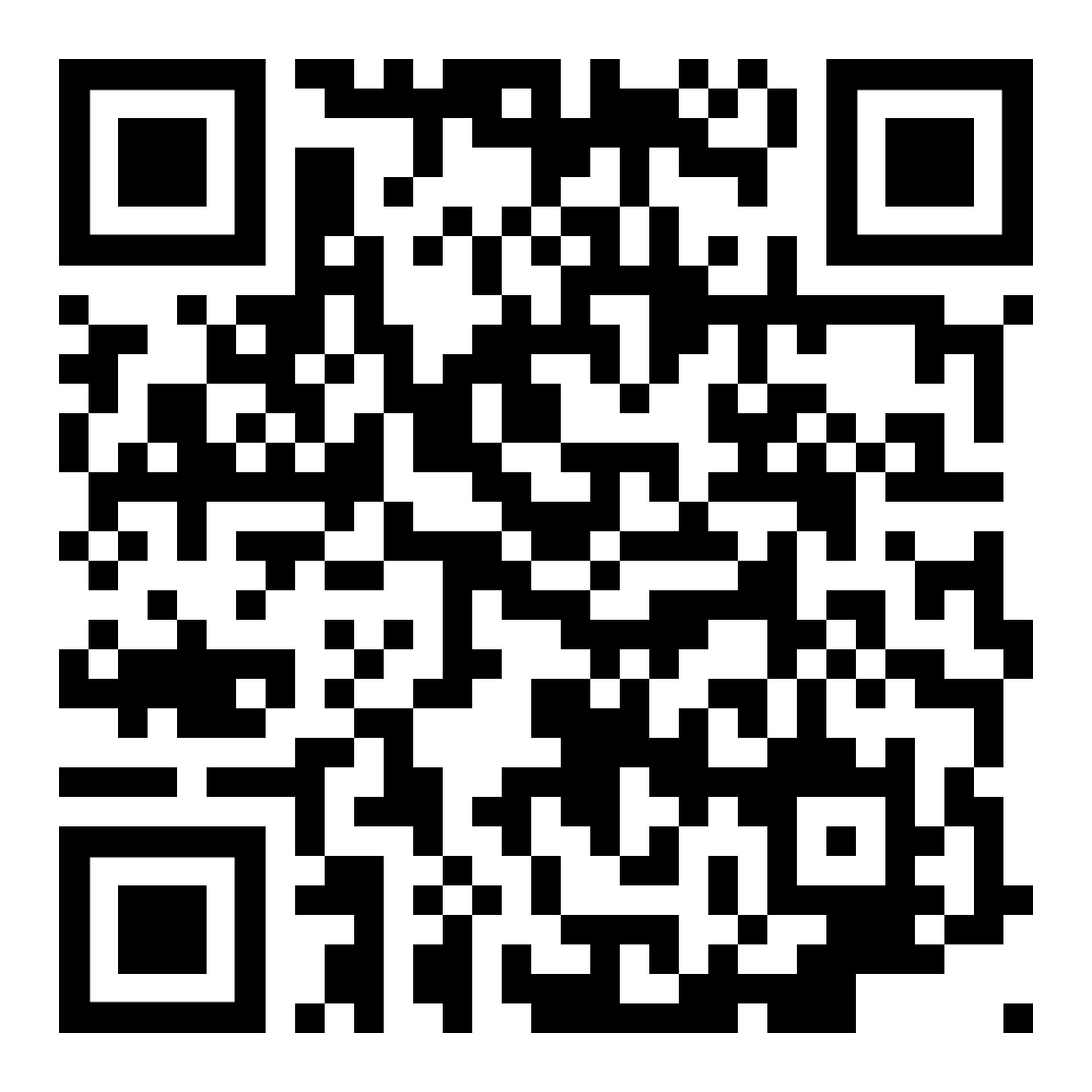Meditation Plus
Define the levels: The first step is defining each level. Beginner sessions should be easy to follow and focus on the basics of meditation, while novice sessions should build on this foundation and introduce more advanced techniques. Advanced sessions should be challenging and require high focus and discipline.
Create content for each level: Create meditation sessions tailored to each level. For beginners, consider guided meditations focusing on breathing exercises and relaxation techniques. For novice practitioners, consider more advanced techniques such as body scans or mindfulness meditations. For advanced practitioners, consider longer meditation sessions focusing on deeper states of consciousness or more complex meditation practices.
Provide clear instructions: Make sure that the instructions for each level are clear and easy to understand. Usage of simple language and avoid jargon or technical terms unfamiliar to beginners.
Offer gradual progression: Make sure each level offers a gradual progression in difficulty. This will help users to build their skills and confidence over time.
Incorporate feedback: Gather user feedback and use it to improve the content and instruction for each level. This will help you to tailor the content to the needs of your users and ensure that it is effective.
By offering three meditation sessions for beginners, novice, and advanced practitioners, you can cater to a broader range of users and help them achieve their meditation goals at their own pace.
Master level: At the master level, individuals have achieved a high level of proficiency in meditation and are considered experts in the field. This level may involve teaching others, participating in research studies, and exploring the frontiers of meditation practices. The main goal at this level is to continue to deepen one’s understanding and practice meditation, and share this knowledge with others.
Determining fair pricing for each level of meditation session would depend on various factors, such as the level of expertise of the instructors, the quality and duration of the sessions, the type of meditation techniques offered, and the overall market demand for such services.
Suggested and general guidelines for some pricing ranges for each level:
Beginner level: The pricing for beginner-level sessions could range from $5 to $20 per session. This would be a reasonable price range for guided meditations focusing on basic techniques such as breathing exercises, body scans, and mindfulness practices.
Novice level: The price for novice-level sessions could range from $15 to $40. This price range could be justified for more advanced techniques such as visualization meditations, loving-kindness practices, and longer meditation sessions.
Advanced level: The pricing for advanced-level sessions could range from $30 to $80 per session. This price range could be justified for highly specialized techniques such as transcendental meditation, deep concentration practices, and spiritual contemplation sessions.
It is important to note that pricing can vary depending on location, competition, and other market factors. It is also essential to provide options for users to purchase packages or subscriptions, which can offer discounts or lower the cost per session.
Overall, determining fair pricing for each level of meditation session would require careful research and consideration of the value being provided to users.
To offer meditation sessions in various languages, here are some tips to follow:
Identify your target audience: Determine which languages your target audience speaks. This will help you to determine which languages to offer the meditation sessions in.
Hire multilingual instructors: Hire instructors fluent in the languages you want to offer sessions. This will ensure that the instructors can provide instruction and guidance in a clear and understandable way to users who speak different languages.
Translate session content: Translate the meditation session content into the languages you want to offer the sessions. This will ensure that users understand the instructions and guidance provided during the sessions.
Offer subtitles: Consider offering subtitles in the languages in which you want to offer the sessions. This will allow users who may need to be fluent in the language to follow along and understand the session content.
Provide user support in multiple languages: In the languages you want to offer the sessions. This could include email or chat support, FAQs, or other resources that users can refer to.
Test and refine: Test the sessions and support resources with users who speak the languages you want to offer the sessions in. Gather feedback and use it to refine the content and support resources to ensure they are practical and easy to use.
By offering meditation sessions in various languages, you can make the content accessible to a broader range of users and help them achieve their meditation goals in a comfortable and understandable way.
Meditation has numerous benefits for enhancing one’s life and through use of imagination. Here are some of the reasons why:
Reduces stress and anxiety: Meditation has been shown to reduce stress and anxiety, which can help to improve overall mental health and well-being. When you are less stressed, you are more likely to feel relaxed and be able to focus on your creative pursuits.
Improves focus and concentration: Meditation can improve focus and concentration, which can help develop and hone your imagination. When you can focus, you can better explore your thoughts and ideas.
Boosts creativity: Meditation can help to stimulate creativity by allowing you to tap into your innermost thoughts and feelings. Boosting helps to access more profound levels of consciousness and creativity by quieting the mind.
Increasing self-awareness: Meditation can help you become more self-aware, enhancing your imagination. When you are more in tune with your thoughts and emotions, you are better equipped to explore them creatively.
Promotes emotional regulation: Meditation can help you to regulate your emotions, which can be beneficial for managing stress and anxiety. Learning to manage your emotions can free up mental space and energy for creative pursuits.
Overall, meditation is a powerful tool for enhancing one’s life and the use of imagination. Incorporating meditation into your daily routine supports one to experience numerous benefits that can help to lead a more fulfilling and creative life.
To have installed voice prompts reciting meditation steps per level. This could be a valuable feature for users new to meditation or who may have difficulty following written instructions.
Here are some tips for implementing voice prompts for meditation:
Record high-quality audio: Make sure the audio recordings are clear and high-quality. This will ensure that users can hear the instructions and guidance clearly.
Use a calm and soothing voice: The voice prompts should be delivered in a calm and soothing voice, which can help users to relax and focus on their meditation practice.
Include clear instructions: The voice prompts should include clear instructions for each step of the meditation practice. This could include guidance on breathing techniques, visualization exercises, or body scans.
Allow for customization: Consider allowing users to customize the voice prompts to suit their preferences. This could include options for different languages, voices, or types of meditation practices.
Test and refine: Test the voice prompts with users and gather feedback on their effectiveness. Use this feedback to refine the prompts and make improvements where necessary.
By incorporating voice prompts into the meditation sessions, you can provide users with an additional tool to enhance their meditation practice and achieve their goals.
Presented each level of meditation detailed explanation:
Beginner level: At the beginner level, the focus is on introducing individuals to the basics of meditation. This level is designed for those new to meditation or needing more experience. Some standard practices at this level include basic breathing exercises, guided meditations, body scans, and mindfulness practices. The sessions are typically shorter and easier to follow, with straightforward instructions. The main goal at this level is to help individuals become more relaxed and focused and develop a foundation for more advanced practices.
Novice level: At the novice level, individuals have already gained some experience in meditation and are ready to move on to more advanced practices. This level may involve more complex breathing techniques, visualization exercises, loving-kindness meditations, and longer meditation sessions. The instructions are more detailed and may require more focus and concentration. The main goal at this level is to help individuals deepen their meditation practice, expand their awareness, and gain more control over their thoughts and emotions.
Advanced level: At the advanced level, individuals have developed a strong foundation in meditation and are ready for more challenging practices. This level may involve transcendental meditation, deep concentration practices, spiritual contemplation, and exploring altered states of consciousness. The instructions are more complex and may require high discipline and commitment. The main goal at this level is to help individuals achieve a deep sense of inner peace and awareness and explore their minds’ full potential.
Master level: At the master level, individuals have achieved a high level of proficiency in meditation and are considered experts in the field. This level may involve teaching others, participating in research studies, and exploring the frontiers of meditation practices. The main goal at this level is to continue to deepen one’s understanding and practice meditation, and share this knowledge with others.
Overall, each level of meditation builds upon the previous level, with more complex practices and deeper states of awareness. By progressing through each level, individuals can develop a strong foundation in meditation and unlock the full potential of their minds.
The importance of meditation with the presence of water and being around water when meditating. As we are one with water, mind, body, spirit, our conscious and subconscious mind as water carries the memories of all our experiences and interactions it sees, breath, interprets to house
Meditation in the presence of water, or being around water while meditating, can be a powerful tool for enhancing the meditation experience. Here are some reasons why:
Water has a calming effect: Water has a natural calming effect on the mind and body. Water’s sound and movement can help support and soothe the nervous system and promote relaxation.
Water helps to promote mindfulness: Being around water can help to promote mindfulness, which is a critical component of meditation. The movement of water can serve as a focal point for meditation, helping individuals to stay present and focused.
Water has healing properties: Water is often associated with healing and renewal. Being in the presence of water can help to promote physical, emotional, and spiritual healing.
Water can help to clear the mind: The sound and movement of water can help to clear the mind of distractions and promote mental clarity. This can be beneficial for achieving more profound levels of meditation and unlocking the mind’s full potential.
Water is a symbol of oneness: Water is a symbol of oneness and interconnectedness. It reminds us that we are all connected to the same universal consciousness.
Overall, the presence of water can enhance the meditation experience and provide a deeper connection to the self and the universe. Individuals can tap into this natural element’s healing and transformative power by incorporating water into meditation.
Breathing and meditation are closely linked, with breathing techniques often a key component of meditation practice. The benefits of incorporating breathing into meditation:
Promotes relaxation: Focusing on the breath during meditation support to help to promote relaxation and reduces stress and anxiety.
Improves focus and concentration: Breathing techniques can improve focus and concentration during meditation, allowing individuals to stay present and focused.
Reduces negative thoughts and emotions: Breathing techniques can help to reduce negative thoughts and emotions, allowing individuals to achieve a more positive and balanced state of mind.
Enhances mindfulness: Focusing on the breath can help enhance mindfulness, a key component of meditation practice. By staying present and focused, individuals can better understand their thoughts, emotions, and physical sensations.
Promotes physical health: Breathing techniques can have a positive impact on physical health, including reducing blood pressure, improving lung function, and reducing the symptoms of asthma and other respiratory conditions.
Improves emotional regulation: Breathing techniques can help individuals to regulate their emotions and improve emotional intelligence. This can be beneficial for managing stress and anxiety and improving personal and professional relationships.
Incorporating breathing techniques into meditation can enhance the practice and provide many physical, emotional, and mental benefits. Individuals can achieve greater well-being and inner peace by focusing on their breath and developing a deeper understanding of the mind-body connection.
Here are some simple steps for practicing breathing techniques during meditation:
Find a quiet and comfortable place to sit: Choose a quiet and comfortable place where you can sit for a few minutes without being disturbed. You can sit cross-legged on the floor, on a cushion, or in a chair with your feet flat.
Sitting with your back straight and your shoulders relaxed: Sit straight and your back relaxed, allowing your breath to flow easily through your body.
Close your eyes or focus on a point: Close your eyes or focus on a point in front of you, allowing your mind to become still and calm.
Focus on your breath: Bring your attention to your breath by focusing on the sensation of the air moving through and out of your body. Notice the rise and fall of one’s chest and the feeling of the air passing through your nose and mouth.
Count your breaths: As you breathe in and out, count each breath, starting with one and counting up to 10. When you reach 10, start over again at one. This can help you to stay focused and present.
Practice deep breathing: Take slow, deep breaths, inhaling through one’s nose and exhaling through one’s mouth. You can also hold your breath between each inhale and exhale for a few seconds.
Visualize the breath: Visualize the breath as color, light, or energy flowing through your body. You can imagine it as a bright, calming light that is filling you with peace and tranquility.
Release tension: Release any tension or stress in your body with each exhale, allowing your body to relax and become more at ease.
Incorporating breathing techniques into your meditation practice can help promote relaxation, improve focus and concentration, and enhance mindfulness. By practicing these simple steps regularly, you can develop a deeper understanding of the mind-body connection and unlock the full potential of your mind.
We are one with water as water houses our memories of good, bad, trauma, wealth, success, abundance and all others.
The idea that we are one with water and that water carries our memories is a metaphorical concept that can be interpreted in different ways. Here are some possible interpretations:
Water symbolizes the interconnectedness of all things: In this interpretation, water is seen as a symbol of the interconnectedness of all things, reminding us that we are one with the same universe and that our experiences are interconnected.
Water symbolizes the power of the subconscious mind: In this interpretation, water is seen as a symbol of the subconscious mind, which houses our memories, emotions, and thoughts. Water is believed to carry the energy of our experiences and interactions, serving as a reminder of our past and a potential source of healing and renewal.
Water symbolizes the transformative power of nature: In this interpretation, water is seen as a symbol of the transformative power of nature, reminding us of its cycles of life, death, and rebirth. Water is believed to have the power to cleanse and purify, washing away negative energy and promoting spiritual growth.
Overall, the idea that we are one with water and that water carries our memories is a poetic and metaphorical concept that can serve as a source of inspiration and reflection. By meditating on this idea, we can tap into water’s healing and transformative power and deepen our understanding of the mind-body connection.
The use of imagination can be a powerful tool for enhancing meditation and deepening our understanding of ourselves and the world around us. By using our imagination in a focused and intentional way, we can tap into the creative power of the mind and explore new insights, perspectives, and possibilities.
Here are some ways in which imagination can be used in alignment with meditation:
Visualization: Visualization is a powerful technique that involves creating mental images or scenes in our mind’s eye. Visualizing specific images or scenarios allows us to focus our attention and create a sense of inner calm and clarity. For example, we might visualize ourselves surrounded by a peaceful, natural setting, such as a forest or beach, or imagine ourselves achieving a specific goal or outcome.
Creative Expression: Creative expression is another way imagination can be used in alignment with meditation. By engaging in creative activities such as writing, drawing, or music-making, we can tap into our inner creativity and connect with more profound aspects of ourselves. These activities can also help us to explore our emotions, desires, and inner world in a safe and supportive way.
Mindfulness: Mindfulness is a technique that involves being fully present at the moment, without judgment or distraction. Focusing on our breath, body, or surroundings can cultivate a sense of inner stillness and awareness. This state of mindfulness can also open space for imagination and creativity to flow, allowing us to connect with our deeper selves and explore new possibilities.
Overall, using imagination in alignment with meditation can be a powerful tool for personal growth, healing, and self-exploration. We can cultivate a sense of inner peace, clarity, and purpose by tapping into our inner creativity and connecting with more profound aspects of ourselves.
Using imagination while meditating can be a powerful tool for deepening our understanding of ourselves and the world around us. By engaging our imagination focused and intentionally, we can explore new perspectives, insights, and possibilities and tap into our inner creativity and wisdom.
Here are some ways in which imagination can be used while meditating:
Visualization: Visualization involves creating mental images or scenes in our mind’s eye, such as a peaceful natural setting or a symbolic object representing a particular quality or state of being. By visualizing these images in a focused and intentional way, we can deepen our sense of inner calm, clarity, and connection to the world around us.
Metaphor: Metaphor uses language or symbols to represent complex ideas or experiences. By engaging our imagination to create metaphors that help us understand our inner experiences, we can gain new insights into our emotions, beliefs, and behaviors.
Symbolism: Symbolism involves using symbolic objects or images to represent abstract ideas or concepts. By engaging our imagination to explore the meanings and associations of these symbols, we can deepen our understanding of ourselves and the world around us.
Creative Expression: Creative expression involves using art, writing, or other forms of self-expression to explore our inner world, connect with our creativity, and engage in creative activities. At the same time, meditating allows us to tap into our inner wisdom and explore new insights and possibilities.
Overall, using imagination while meditating can be a powerful way to deepen our connection to ourselves and the world around us. By engaging our imagination focused and intentionally, we can tap into our inner wisdom and creativity and explore new insights and possibilities.
Tapping into awareness through meditation involves cultivating mindfulness and presence in the moment. This involves bringing our full attention to our present experience without judgment or distraction.
Here are some ways in which meditation can help us tap into awareness:
Mindfulness: Mindfulness is a technique that involves being fully present at the moment, without judgment or distraction. Focusing on our breath, body, or surroundings can cultivate a sense of inner stillness and awareness.
Self-Inquiry: Self-inquiry involves exploring our inner world and questioning our beliefs, assumptions, and behavior patterns. By using meditation to cultivate a sense of inner stillness and presence, we can more easily access our inner wisdom and intuition and explore new insights and possibilities.
Acceptance: Acceptance involves accepting our present experience without judgment or resistance. By using meditation to cultivate a sense of inner stillness and presence, we can develop greater acceptance of ourselves and the world around us and cultivate a sense of inner peace and well-being.
Compassion: Compassion involves cultivating a sense of kindness, empathy, and compassion towards ourselves and others. By using meditation to cultivate a sense of inner stillness and presence, we can develop greater compassion and empathy towards ourselves and others and cultivate a sense of connection and unity with the world around us.
Overall, tapping into awareness through meditation involves cultivating a sense of mindfulness and presence in the moment and developing greater acceptance, compassion, and insight into “selfhood” and the world around us. By using meditation as a tool for self-exploration and growth, we can deepen our connection to our inner wisdom and intuition and cultivate greater clarity and purpose.
Going within self and embracing the infinite version of self involves exploring the deeper aspects of our inner world and connecting with our most real, most authentic selves. This process involves cultivating a sense of mindfulness and presence in the moment and developing greater self-awareness, self-acceptance, and self-love.
Here are some ways in which we can go within self and embrace the infinite version of self:
Meditation: Meditation is a powerful tool for going within self and cultivating a sense of inner stillness and presence. By using meditation to focus our attention and cultivate mindfulness, we can more easily access our inner wisdom and intuition and explore the deeper aspects of our inner world.
Self-Exploration: Self-exploration involves questioning our beliefs, assumptions, and behavior patterns and exploring the deeper aspects of our inner world. Using techniques such as journaling, creative expression, or therapy, we can gain new insights into ourselves and cultivate greater self-awareness and self-acceptance.
Self-Love: Self-love involves cultivating a sense of kindness, compassion, and love towards ourselves. By practicing self-care, self-compassion, and self-acceptance, we can cultivate a deeper sense of connection and love for ourselves and embrace the infinite version of self.
Surrender: Surrender involves letting go of our attachment to outcomes and expectations and embracing the present moment. By surrendering to the flow of life and trusting in our inner wisdom and intuition, we can embrace the infinite version of self and connect with the deeper aspects of our inner world.
Overall, going within self and embracing the infinite version of self involves
cultivating a sense of mindfulness and presence,
exploring the deeper aspects of our inner world, and
developing greater self-awareness, self-acceptance, and self-love.
By using these techniques to connect with our truest selves, we can live a more authentic, fulfilling, and purposeful life.
Further explain the cycle of life, birth, rebirth, our soul, and spirit as we continue with assignments of incarnation.
The cycle of life, birth, rebirth, and incarnation is fundamental in many spiritual and philosophical traditions. The basic idea is that our souls or spirits are eternal and that we go through a cycle of birth, death, and rebirth, each time taking on a new physical form and a new set of experiences. Here’s a further explanation of this concept:
Incarnation: Incarnation refers to the idea that our souls or spirits take on a physical body and become embodied in the material world. This is believed to happen at birth when our consciousness becomes attached to a physical body, and we begin our journey through life.
Life and Experience: During our lifetime, we have experiences that shape our consciousness and help us grow and evolve as individuals. These experiences can be positive or negative and are believed to impact our spiritual development profoundly.
Death and Rebirth: When we die, our physical body ceases to exist, but our soul or spirit continues to live on. Then, we are reborn into a new physical body, beginning the cycle anew. It is believed that our souls or spirits go through a process of review and reflection, where we examine the experiences, we had during our lifetime and learn from them.
Karma: Karma refers to the idea that our actions in one lifetime have consequences that affect us in future lifetimes. This means that the experiences we have in each lifetime are influenced by the actions we took in previous lifetimes, and the actions we take in our current life will influence our future experiences. Positive actions are believed to create positive karma, while negative actions create negative karma.
Overall, the cycle of life, birth, rebirth, and incarnation is a complex and profound concept that has been explored and interpreted in many different ways. Some may call the above described a way to inner-stand and to simplify one’s understanding of nature, the universe, and our place in it, while others see it as a way to explore the mysteries of consciousness and the soul.
However, we live with karma daily through the actions we take, as karma is not solely for life.
While karma is often associated with its birth, death, and rebirth cycle, it is also believed to impact our daily lives in the here and now. According to this understanding of karma, our actions in the present moment can have positive or negative consequences that affect our future experiences.
For example, if we perform actions that are kind, compassionate, and ethical, we are believed to accumulate positive karma that can lead to positive experiences in the future. On the other hand, if we perform harmful, selfish, or unethical actions, we are believed to accumulate negative karma that can lead to negative experiences in the future.
The idea of karma is a powerful reminder to be mindful of our actions and their consequences, both for ourselves and others. By acting with kindness, compassion, and integrity daily, we can accumulate positive karma, leading to a more fulfilling and rewarding future.
Meditation by tapping into all 12 chakras points can be a powerful way to connect with our inner wisdom and energy and explore the deeper aspects of our consciousness. The chakras are energy centers located along the spine and correspond to different aspects of our physical, emotional, and spiritual selves. By using meditation to focus our attention on each of the 12 chakras, we can cultivate a sense of balance and harmony in our energy system and deepen our connection to our inner selves.
Here are some ways in which we can use meditation to tap into all 12 chakra points:
Grounding: Grounding involves focusing on the first chakra, located at the base of the spine, and represents our connection to the Earth and our physical body. By visualizing a root extending from the base of our spine into the Earth, we can cultivate a sense of stability and security and connect with our physical presence.
Creativity: The second chakra, located in the pelvic area, represents our creativity, sexuality, and emotional expression. By focusing on this chakra and visualizing a flow of creative energy, we can tap into our inner creativity and emotional expression.
Personal Power: The third chakra, located in the solar plexus, represents our power, willpower, and sense of self. By focusing on this chakra and visualizing a bright yellow light, we can cultivate a sense of confidence, self-esteem, and personal power.
Love and Compassion: The fourth chakra, located in the heart center, represents our capacity for love, compassion, and connection. By focusing on this chakra and visualizing a warm, loving light, we can cultivate compassion, empathy, and connection to others.
Communication: The fifth chakra in the throat represents our ability to communicate and express ourselves. We can cultivate clear, authentic communication and self-expression by focusing on this chakra and visualizing a bright blue light.
Intuition: The sixth chakra, located in the third eye, represents our intuition, insight, and inner wisdom. By focusing on this chakra and visualizing a deep purple light, we can tap into our inner wisdom and intuition and gain new insights and perspectives.
Connection to the Divine: The seventh chakra, located at the crown of the head, represents our connection to the divine, the universe, and our higher selves. By focusing on this chakra and visualizing a bright white light, we can cultivate a sense of connection to the divine and our higher purpose.
Connection to Earth: The eighth chakra, located just above the crown of the head, represents our connection to the Earth and the natural world. Focusing on this chakra and visualizing a green light can deepen our connection to the natural world and life cycles.
Spiritual Awakening: The ninth chakra above the eighth chakra represents our spiritual awakening and connection to higher realms of consciousness. By focusing on this chakra and visualizing a violet light, we can tap into our spiritual potential and cultivate a sense of connection to higher states of awareness.
Galactic Connection: The tenth chakra, located just above the ninth chakra, represents our connection to the broader universe and our place in the cosmos. By focusing our attention on this chakra and visualizing a silver light, we can tap into our cosmic potential and explore the more profound mysteries of the universe.
Connection to Angels: The eleventh chakra, located just above the tenth chakra, represents our connection to the angelic realm and
There are many interpretations and systems of chakras, including up to 21 chakras. Here is a complete list of chakras that includes the 12th through 21st chakras:
Connection to Ascended Masters: The twelfth chakra, located just above the eleventh chakra, represents our connection to the realm of ascended masters and spiritual teachers. By focusing our attention on this chakra and visualizing a golden light, we can tap into the wisdom and guidance of these higher beings.
Connection to the Divine Feminine: The thirteenth chakra, located above the twelfth chakra, represents our connection to the divine feminine and the nurturing, creative energy of the universe. Tap into our inner creativity and intuition by focusing on this chakra and visualizing a pink light.
Connection to the Divine Masculine: The fourteenth chakra, located above the thirteenth chakra, represents our connection to the divine masculine and the active, assertive energy of the universe. By focusing our attention on this chakra and visualizing a blue light, we can tap into our inner strength and leadership potential.
Connection to Universal Consciousness: The fifteenth chakra, located above the fourteenth chakra, represents our connection to universal consciousness and the underlying unity of all things. We are tapping into our inner wisdom and insight by focusing on this chakra and visualizing white light.
Connection to the Soul Star: The sixteenth chakra above the fifteenth chakra represents our connection to our soul and our unique life purpose. We can tap into our inner guidance and spiritual potential by focusing on this chakra and visualizing a violet light.
Connection to the Divine Plan: The seventeenth chakra above the sixteenth chakra represents our connection to the divine plan and the larger spiritual purpose of our lives. By focusing on this chakra and visualizing a gold light, we can tap into our inner sense of purpose and destiny.
Connection to the Multidimensional Self: The eighteenth chakra, located above the seventeenth chakra, represents our connection to the multidimensional aspects of our being and the larger cosmos. By focusing on this chakra and visualizing a rainbow of colors, we can tap into our inner multidimensionality and explore new realms of consciousness.
Connection to Cosmic Consciousness: The nineteenth chakra above the eighteenth chakra represents our connection to cosmic consciousness and the universal laws that govern the universe. By focusing on this chakra and visualizing a silver light, we can tap into our inner cosmic potential and explore the universe’s more profound mysteries.
Connection to the Universal Mind: The twentieth chakra, located above the nineteenth chakra, represents our connection to the universal mind and the collective wisdom of humanity. Focusing on this chakra and visualizing a blue light allows us to tap into our inner intellect and explore new ideas and perspectives.
Connection to the Unity Consciousness: The twenty-first chakra, located above the twentieth chakra, represents our connection to the unity consciousness and the larger spiritual purpose of our lives. By focusing on this chakra and visualizing a golden light, we can tap into our inner sense of oneness and interconnectedness with all things.










